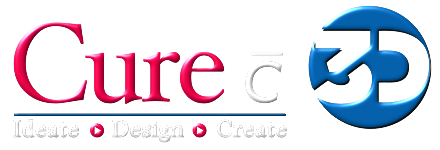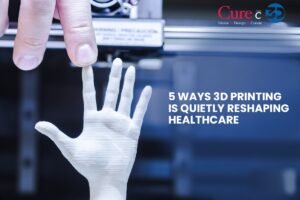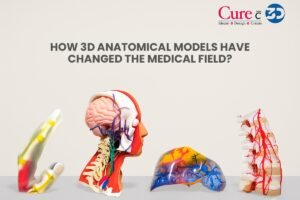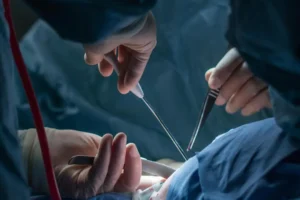Precision is a one-word; surgeons understand it best!
A cut made just a few millimeters off, or a drill at the wrong angle, can completely change the outcome of a surgery.
That is the difference 3D printed patient-specific surgical guides can make. These custom, 3D-printed tools can give surgeons an added layer of confidence and accuracy during their surgeries.
But for them to be genuinely reliable in the operating room, the printing process has to meet certain strict clinical standards, like it needs to be biocompatible, strong enough to hold up under stress, accurate to the patient’s anatomy, and able to survive sterilization without warping.
So, which printing technology is best suited, FDM, SLA, or SLS 3D printing technology to produce orthopedic jigs?
Fused Deposition Modeling (FDM)
FDM is one of the most commonly used 3D printing techniques. It works by extruding melted thermoplastic material layer by layer. This cost-effective process is popular for creating durable prototypes and end-use parts across various industries.
Advantages for Surgical Guides:
- Cost-Efficiency: FDM printers and materials are generally more affordable, making it a practical choice for facilities with budget considerations.
- Material Versatility: A wide range of biocompatible materials are available, which is useful for producing patient-specific surgical guides that require reliability for orthopedic procedures.
Limitations:
- Surface Finish and Detail: The layering process can result in a rougher surface finish and lower resolution compared to SLA and SLS. This may affect the precision required for custom orthopedic jigs and bone alignment surgical jigs.
- Accuracy: When it comes to complex geometries or implant placement surgical guides, it may not offer the precision needed for accurate drilling or navigation.
Ideal For:
- Rapid prototyping and initial design iterations.
- Applications where cost is a significant consideration and ultra-high resolution is not critical.
Stereolithography (SLA)
SLA uses a laser to cure liquid resin into hardened plastic in a layer-by-layer process. It is celebrated for its ability to produce extremely detailed and smooth parts.
Advantages for Surgical Guides:
- High Resolution and Accuracy: SLA is a highly efficient process during the fabrication of a detailed patient-specific surgical guide. The surface smoothness and detail of the product are greatly appreciated by custom orthopedic jigs and dental surgical guides that need to be precisely replicated from the patient anatomy.
- Precision in Complex Designs: When the complicated guides, such as spinal surgical guides and implant placement surgical guides, are mentioned, SLA makes sure that the high fidelity from design to finished product is maintained.
Limitations:
- Material Cost and Post-Processing: On the one hand, SLA resins may be more costly; on the other hand, one has to do the post-processing of the parts, which usually involves cleaning and curing; thus, the total time for the production may be longer.
- Durability: Some SLA resins might be less durable than thermoplastics used in FDM, which could be a concern for surgical tools intended for multiple sterilizations.
Ideal For:
- Patient-specific surgical guides
- Implant placement guides
- Tooth and gum-contact models
- Fine drill sleeve integration
Selective Laser Sintering (SLS)
SLS employs a laser to fuse powdered material into solid parts. This technique has become synonymous with the production of sturdy, serviceable parts that require no support structures, and it is therefore particularly suitable for complex geometries.
Due to the fact that the 3D printed parts are nylon-based, they are strong, can withstand autoclave sterilization, and do not require support structures, which makes the production of complex shapes easier.
Advantages for Surgical Guides:
- Strength and Durability: SLS parts are very durable and can be used without limitation. They are therefore well-suited for orthopedic surgical guides and bone alignment surgical jigs that have to be strong enough to deal with the surgical environment stresses.
- Complex Geometry: The fact that SLS can be printed without support structures makes it the perfect choice for producing complex, intricate designs that are often required in patient-specific surgical guides and custom orthopedic jigs.
- Material Properties: There is a whole range of medical-grade powders available; thus, the printed surgical guide is not only biocompatible but also able to keep its structure intact during sterilization.
Limitations:
- Cost and Time: SLS usually is more expensive than FDM and SLA. It covers both machine and raw material costs. Besides, the process can also be slower.
- Surface Texture: SLS is a method that ensures parts are durable, but the surface may need further treatment (curing) in order to reach the smoothness that is required for some surgical applications.
Ideal For:
- Custom orthopedic jigs for long surgeries
- Bone alignment surgical jigs
- Load-bearing spinal surgical guides
FDM vs. SLA vs. SLS: A Side by Side Comparison
| Feature | FDM | SLA | SLS |
| Accuracy | Moderate | High | High |
| Surface Finish | Rough | Smooth | Medium |
| Material Strength | Low to Medium | Medium (brittle if not post-cured) | High |
| Cost | Low | Moderate | High |
| Sterilizable | Limited | Yes (with medical resins) | Yes |
| Use Case Suitability | Planning, prototyping | Dental & fine orthopedic guides | Load-bearing orthopedic surgical jigs |
What’s Best for Custom Orthopedic Surgical Guides?
It all depends on the specific requirements of the surgical guide:
- FDM: Best for visual planning and education
- SLA: Best for high-precision, patient-contact guides like dental surgical guides
- SLS: Best for strength-critical, intraoperative tools like custom orthopedic jigs
In a field like surgery where stakes are very high, precision is not a nice-to-have but a must-have. At Curewith3D, we partner with you to pick out the best materials and methods that allow you to make every procedure more accurate, safe, and with confidence.
So, want to explore custom orthopedic or dental surgical guide solutions?Reach out to us at www.Curewith3D.com today.




